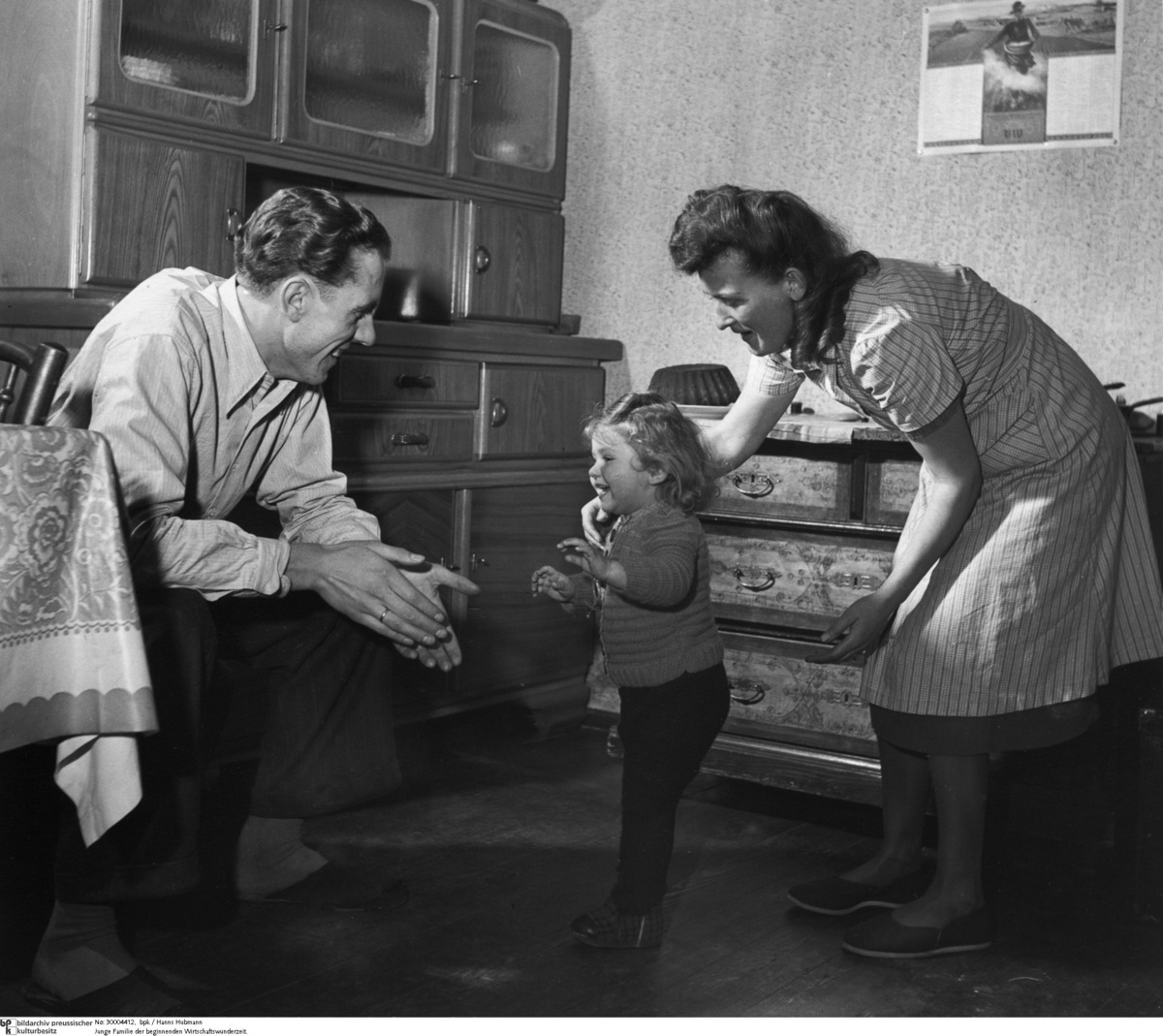Source

Source: Photo: Hanns Hubmann.
bpk-Bildagentur, image number
30004412. For rights inquiries, please contact Art Resource at
requests@artres.com (North America) or bpk-Bildagentur at
kontakt@bpk-bildagentur.de (for all other countries).
Against the backdrop of the “zero-hour” collapse of society and the hardship of the subsequent occupation period, many West Germans regarded the upswing in the Federal Republic as nothing less than an “economic miracle” [Wirtschaftswunder]. Between 1950 and 1960, West Germany’s national product tripled. The economy grew at an average rate of 8.8 percent from 1950 to 1954, 7.2 percent from 1955 to 1958, and 5.7 percent from 1959 to 1963. The broader population also benefited from the boom: between 1950 and 1962, workers’ incomes rose by a factor of almost two and a half. In addition, the positive economic developments increased the scope for social policy. In 1954, the state supported families by increasing tax exemptions for the first and second children annually from DM 600 to DM 720 (and then to DM 1,440 for the second child as of October 1956). That same year, tax exemptions for the third and each additional child rose from DM 840 to DM 1,680. The Child Benefit Law, which went into effect on January 1, 1955, provided families with monthly payments of DM 25 (increased to DM 30 in 1957) for the third and each additional child. Payments were made by Family Benefits Offices [Familienkassen].

Source: Photo: Hanns Hubmann.
bpk-Bildagentur, image number
30004412. For rights inquiries, please contact Art Resource at
requests@artres.com (North America) or bpk-Bildagentur at
kontakt@bpk-bildagentur.de (for all other countries).
© bpk / Hanns Hubmann